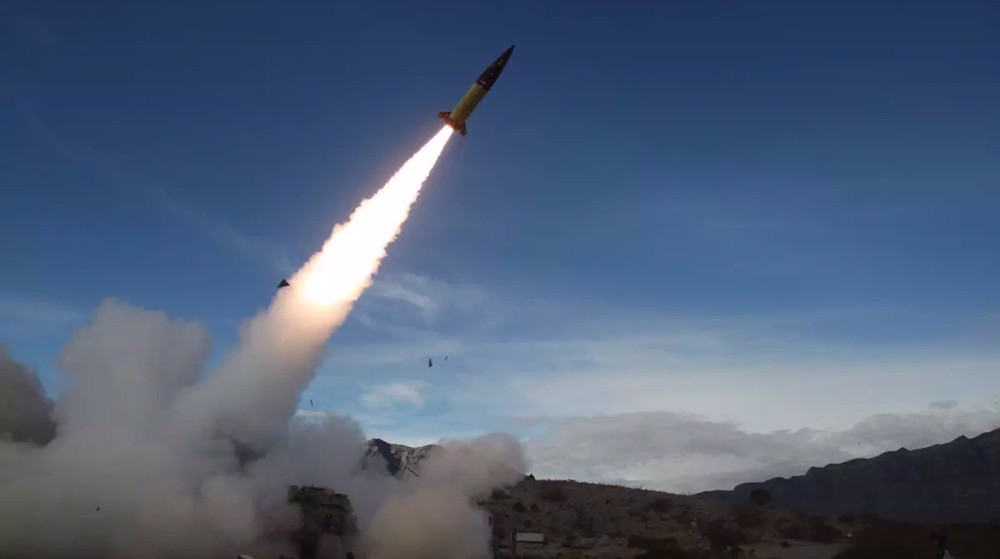US to test banned missiles after leaving INF treaty with Russia in August
The United States is preparing to test two ground-launched missiles that it has been developing for more than 30 years in August, when it is expected to abandon a treaty with Russia that bans the use of such weapons.
The projects include a low-flying cruise missile with a range of about 1,000 kilometers and a ballistic missile with a range of roughly 3,000 to 4,000 kilometers, military officials who could not reveal their name under the Pentagon’s security rules told the media.
The cruise missile will be flight-tested in August, when Washington’s three-month suspension of the Cold War-era Intermediate-range Nuclear Forces (INF) treaty comes to an end.
The administration of US President Donald Trump has threatened to fully withdraw from the agreement unless Russia dismantles the 9M729 ground-launched cruise missile, which Washington believes is in violation of the INF.
Russia has rebuffed US claims by showcasing the missile to journalists and revealing many of its sensitive specifications to ensure the international community that the Trump administration is being dishonest.
Singed in 1987, the treaty banned the US and the former Soviet Union from developing ground-launched nuclear-capable missiles with ranges from 500 to 5,500 kilometers.
The Pentagon’s new ground-launched cruise missile (GLCM) might be ready for deployment within 18 months, an official said.
The longer-range ballistic missile, however, won’t be ready for flight tests before November and its deployment will take five years or more, the official added.
Michelle Baldanza, a Pentagon spokeswoman, had announced on Monday that the military was fabricating parts of a new GLCM.
She said then that Washington would stop the projects if Moscow agreed to a deal to rescue the INF treaty before August.
American officials insist that none of the new missiles will be capable of delivering nuclear payloads but that is not the real threat of such weapons.
What makes intermediate-range weapons a destabilizing force is the short time they take to reach their designated target.
The current situation bears similarities to a missile standoff between the US and the Soviet Union in 1980s, when Washington deployed a nuclear-armed weapon in Britain and several other European NATO countries along with Pershing 2 ground-based ballistic missiles in response to Moscow’s deployment of SS-20 missiles that could reach Western Europe.
Those missiles were withdrawn and destroyed upon the signing of the INF.
The Pentagon officials said they had yet to discuss possible deployment of the new weapons with US allies in Europe and Asia, particularly because the NATO is still studying the possible effects of the INF’s collapse.
However, one defense official said Washington could deploy the new intermediate-range ballistic missile could be deployed on the Pacific territory of Guam, which is close enough to China and Russia to cause a threat.
US arms control advocates as well as congressional Democrats have questioned the decision to leave INF.
“The Russians have been violating the INF treaty for years but, instead of focusing world opinion against the Russians, the Trump administration decided to withdraw from the treaty,” Representative Adam Smith, the Democratic chairman of the House Armed Services Committee, said recently. “Instead of punishing the Russians, the administration has announced it would sink to the level of the Russians.”
Washington has a long track record of tying major weapons upgrade plans to an external threat in order to convince the taxpayers.
Read More:
The Pentagon announced in August 2017 that it had hired Boeing and Northrop Grumman to develop a replacement for the US Air Force’s arsenal of ageing Minuteman III intercontinental ballistic missiles (ICBMs) and cruise missiles.
Back then, Washington used an escalated war of words between Trump and North Korean leader Kim Jong-un, which saw both sides trade threats of nuclear apocalypse, to justify the move.
VIDEO | Press TV's news headlines
Severe heat wave hits India as phase 2 of polling begins
What to expect after President Raeisi's visit to Pakistan
China describes Iran as ‘strategic partner' in West Asia
April 25: ‘Axis of Resistance’ operations against Israeli occupation
Hezbollah hits Israeli military sites near border with rockets, drones
Rwandans say UK deportation 'another brutal manifestation of neo-colonialism'
US troops begin construction of controversial pier off Gaza











 This makes it easy to access the Press TV website
This makes it easy to access the Press TV website